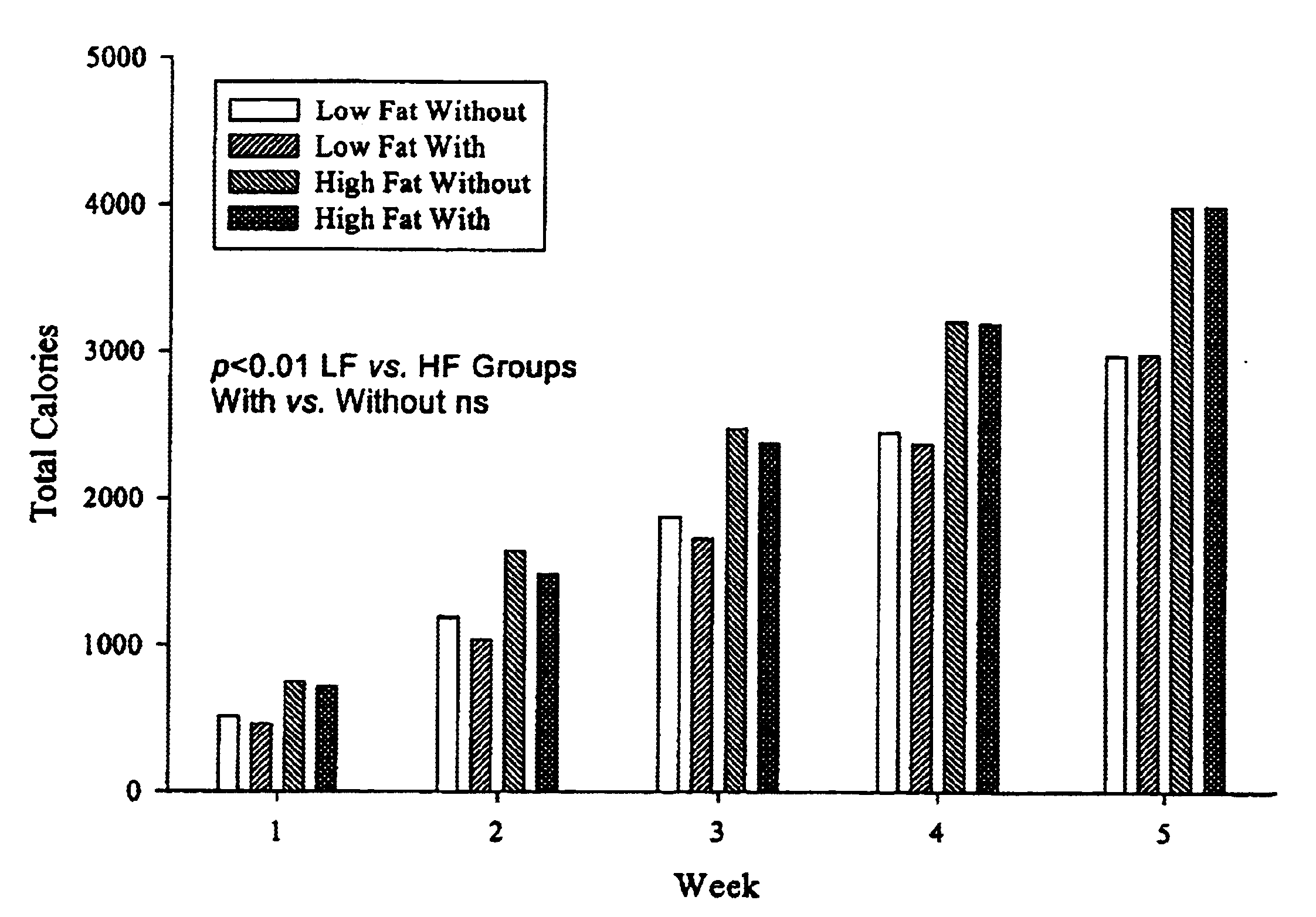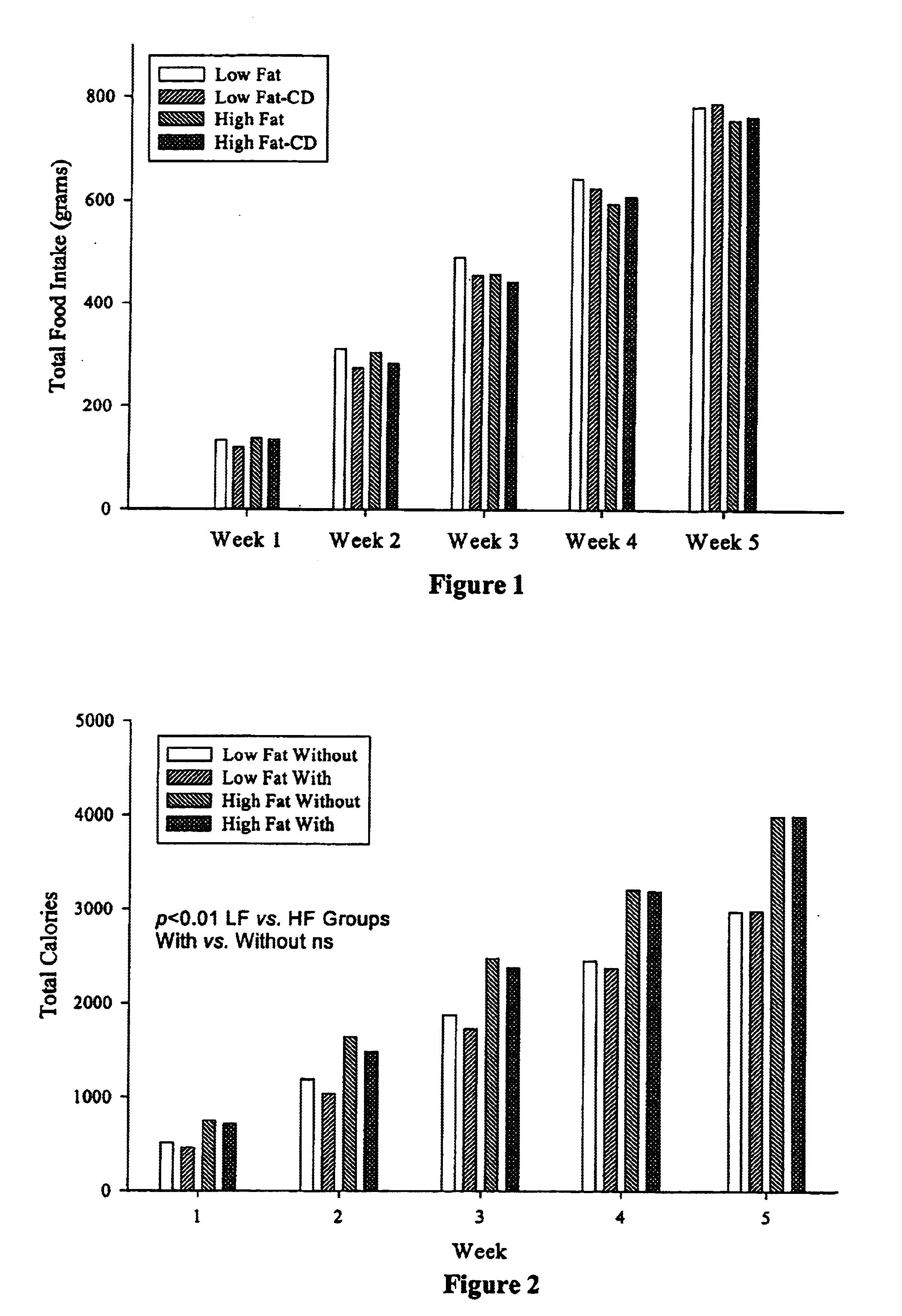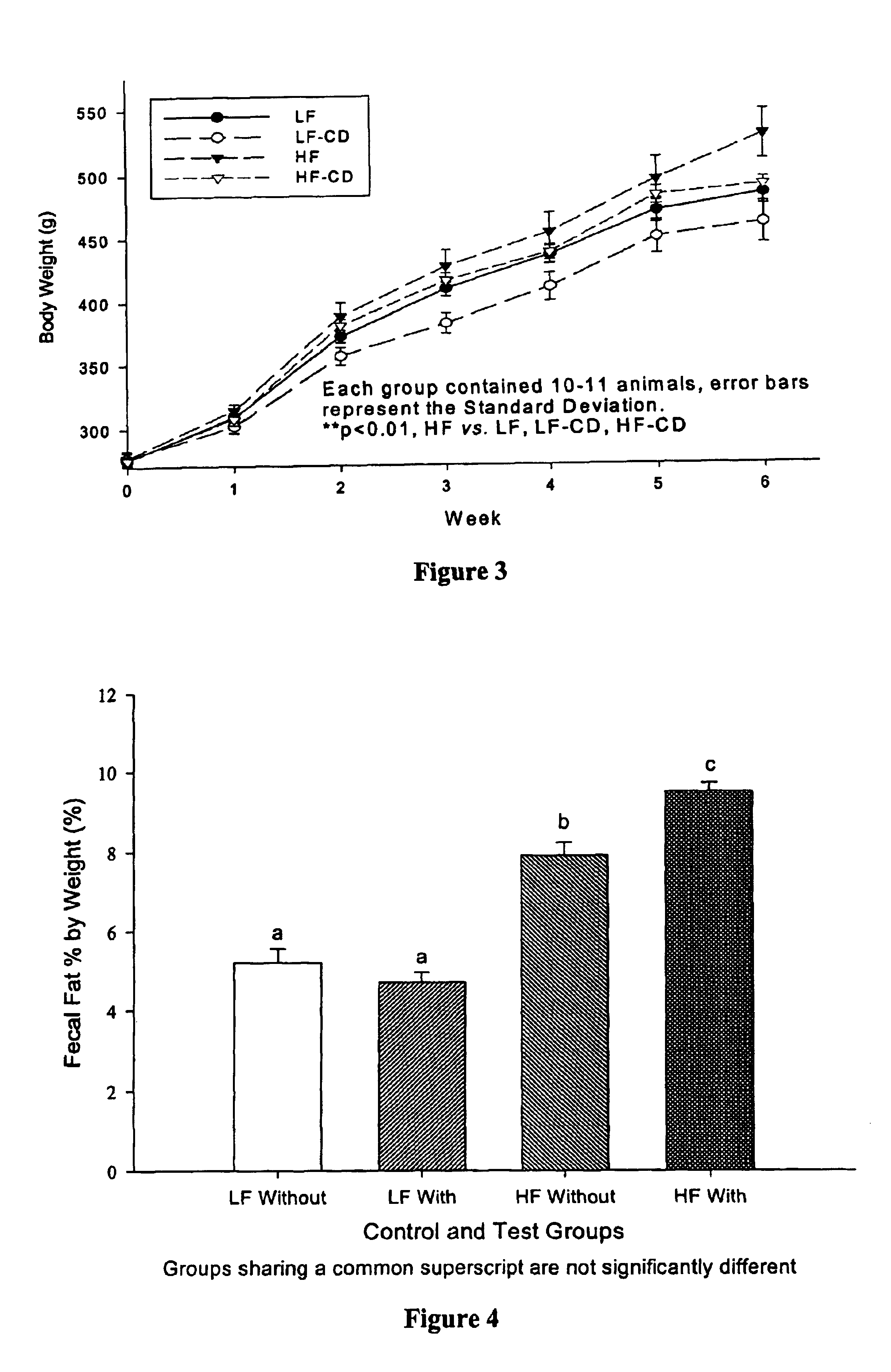Compositions comprising dietary fat complexer and methods for their use
a technology of dietary fat and complexer, which is applied in the field of consumable products containing fat, can solve the problems of difficulty in imagining being able to complex enough triglycerides to make a significant difference in body weight, and achieve the effects of reducing fat bioavailability, reducing fat bioavailability, and inhibiting its absorption by the body
- Summary
- Abstract
- Description
- Claims
- Application Information
AI Technical Summary
Benefits of technology
Problems solved by technology
Method used
Image
Examples
example 1
[0072]FIGS. 9A-9C depict the results of an in vitro study of vegetable oil (4 g), water (6 g) (with added food coloring for contrast) and varying amounts of (A) α-cyclodextrin (100-2,000 mg, right to left), (B) β-cyclodextrin or (C) γ-cyclodextrin. A band of “wax-like” material layered between the oil and aqueous phases is apparent in the tubes. The size of this band increases with increasing amounts of α-cyclodextrin to a maximum in the tube labeled 10% (400 mg α-cyclodextrin / 4 g oil). Note the increasing size (right to left) of a white layer of un-reacted α-cyclodextrin in the bottom of the tubes. This material is displaced from solution by either the oil or the α-cyclodextrin-oil complex. These tubes were centrifuged in order to improve the definition of the layers. The “wax-like” complex is of such a consistency that all of the tubes in 9A except for the furthest two to the right can be inverted without leakage of the aqueous phase around the complex.
[0073]The pore size of α-cyc...
example 2
Animal Studies
[0074]To examine the effect of α-cyclodextrin on body weight gain and plasma lipid levels in animals fed high fat and low fat diets, we conducted a short-term feeding study using Wistar rats. Forty-two male Wistar rats, 10 weeks old, were obtained from Harlan-Sprague Dawley. Following a one-week adaptation while being fed the control low fat diet (LF), they were divided equally into two groups, one low-fat (LF) diet and the other high-fat (HF) diet. These two groups were further divided into two subgroups. Two groups were fed the LF or HF diet and served as controls for the other two test groups which were fed the LF or HF diet containing α-cyclodextrin, wherein the amount of α-cyclodextrin was such that the ratio of α-cyclodextrin to fat in the food was 1:10 w / w. The LF diet was formulated according to AIN-93M diet and contains 4% (w / w) soybean oil as the fat source. The HF diet was a modification of the LF diet with 40% soybean oil. Therefore, the LF group receiving ...
example 3
Initial Clinical Data
Effect of α-Cyclodextrin on Serum Triglyceride Levels
[0087]To determine the effect of α-cyclodextrin on triglyceride levels, eight volunteers were fed on two consecutive days a two-egg cheese (54 g) omelet and a milkshake containing a total of 47 g of fat after an overnight fast. On the first day the meal also contained approximately 5 g of α-cyclodextrin. Blood samples (10 ml) from each volunteer taken via an in-dwelling venous catheter immediately prior the meal (zero-time) and at 1, 2 and 3 hours after the meal was consumed and were assayed for serum triglyceride levels. The zero-time sample were used as the baseline to calculate the percentage change in blood serum triglyceride levels of the human volunteers at one, two and three hours. FIG. 7 illustrates the data collected from the volunteers. It is of note that the expected increase in serum triglyceride levels is less when the α-cyclodextrin was mixed with the food than when it is not present, although th...
PUM
| Property | Measurement | Unit |
|---|---|---|
| w/w | aaaaa | aaaaa |
| weight loss | aaaaa | aaaaa |
| weight loss | aaaaa | aaaaa |
Abstract
Description
Claims
Application Information
 Login to View More
Login to View More - R&D
- Intellectual Property
- Life Sciences
- Materials
- Tech Scout
- Unparalleled Data Quality
- Higher Quality Content
- 60% Fewer Hallucinations
Browse by: Latest US Patents, China's latest patents, Technical Efficacy Thesaurus, Application Domain, Technology Topic, Popular Technical Reports.
© 2025 PatSnap. All rights reserved.Legal|Privacy policy|Modern Slavery Act Transparency Statement|Sitemap|About US| Contact US: help@patsnap.com



